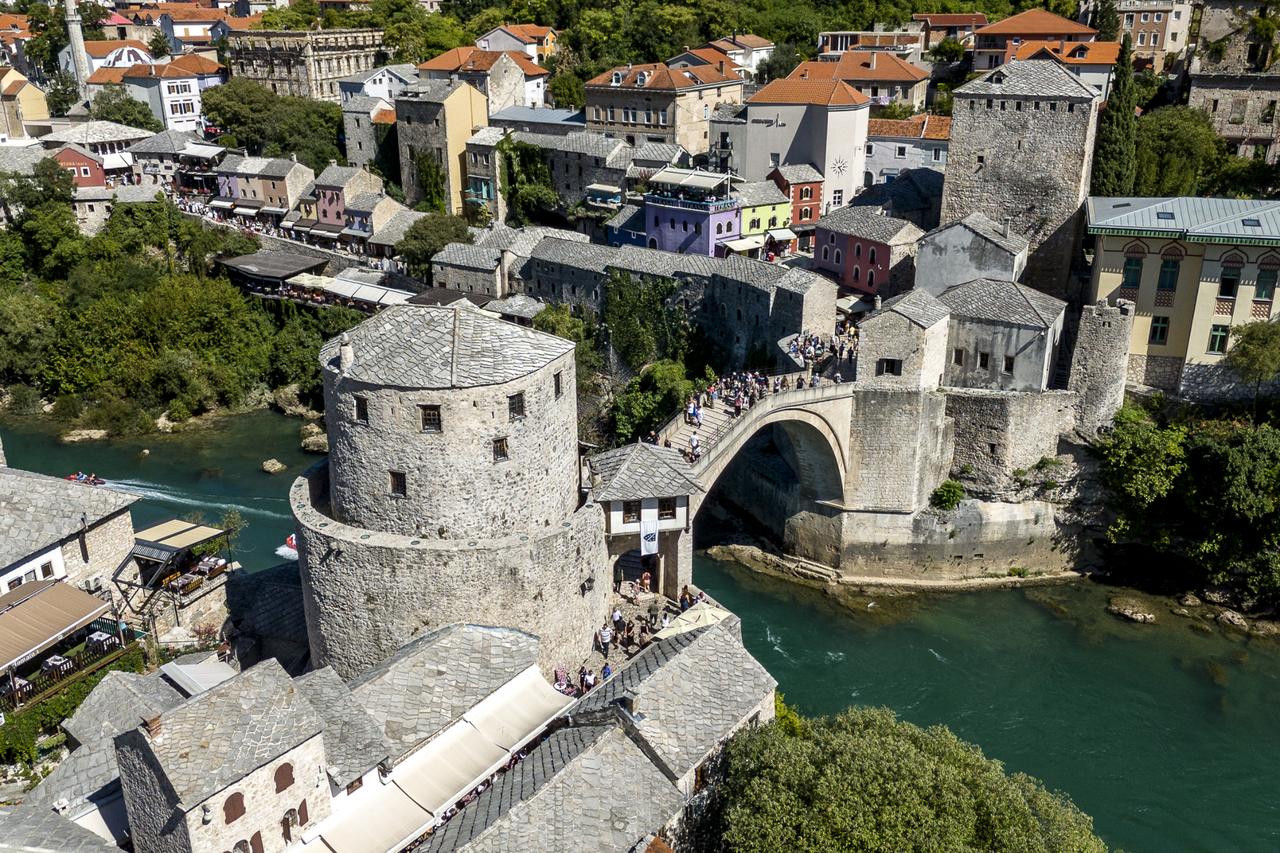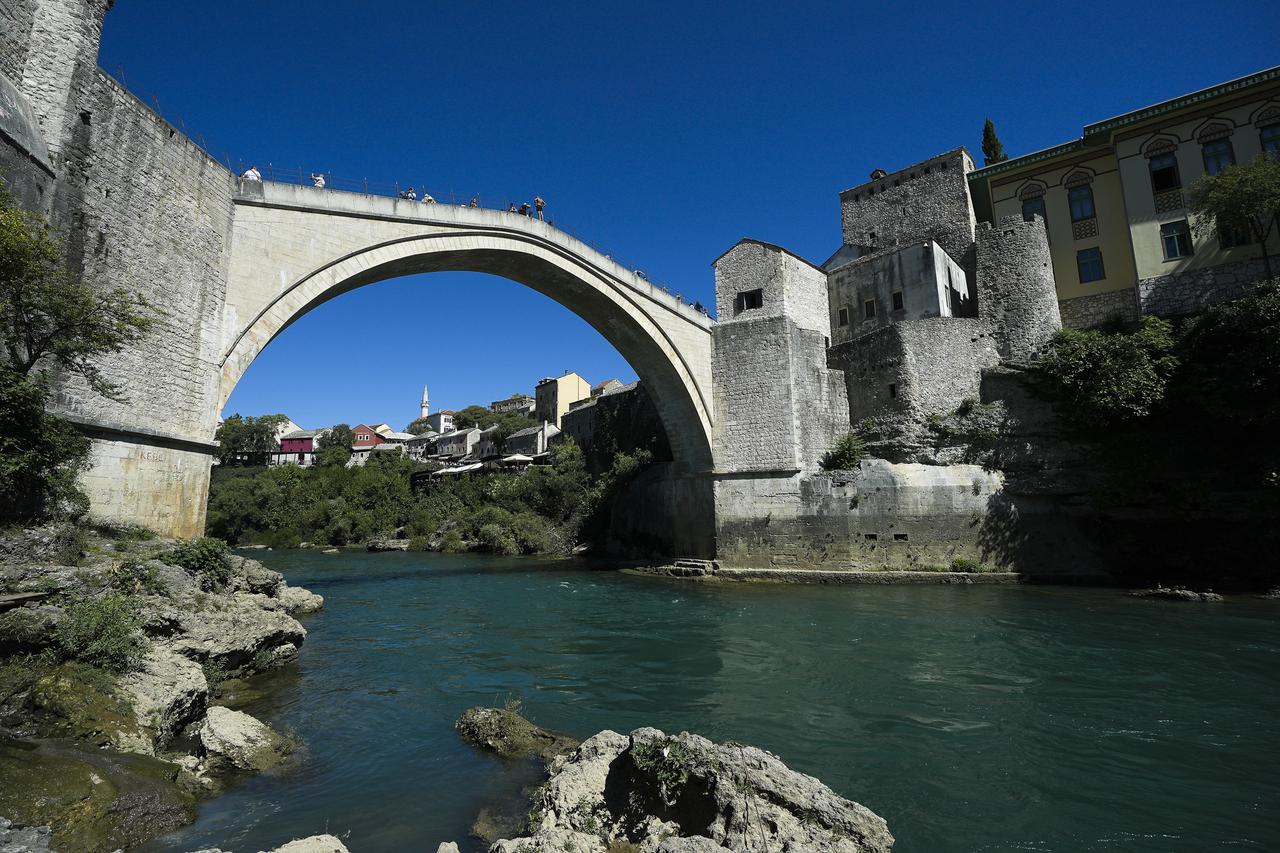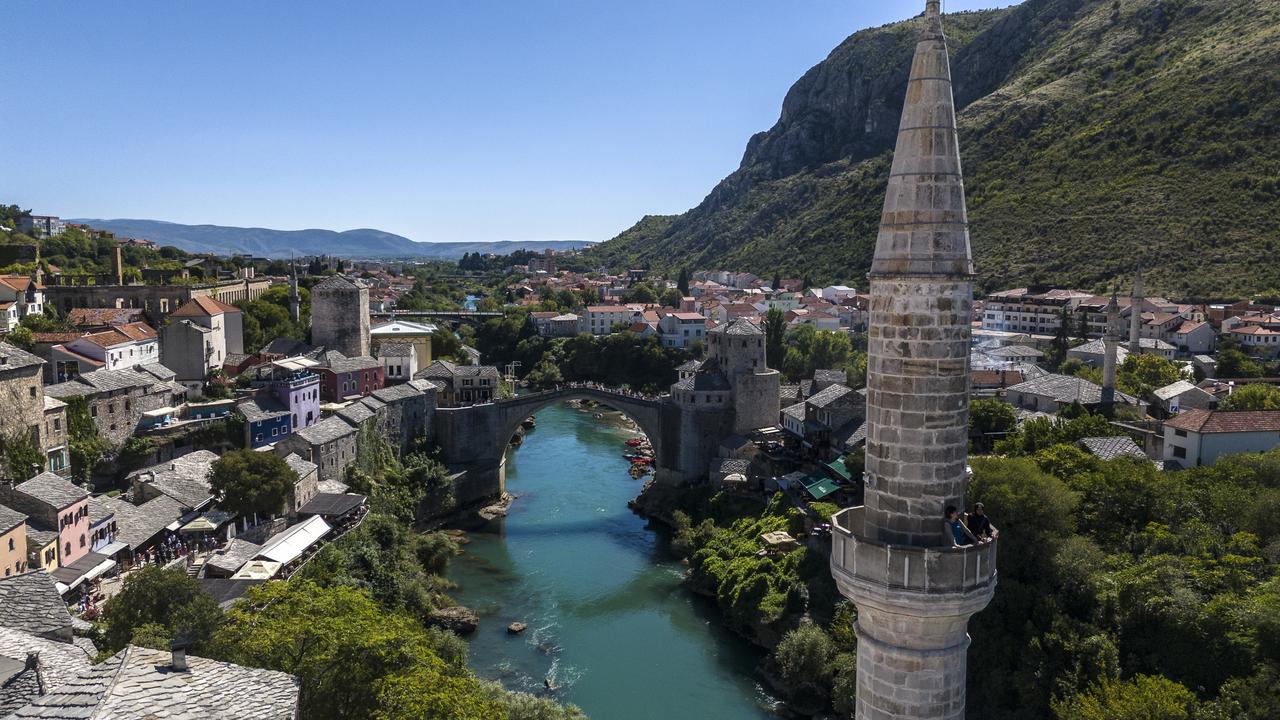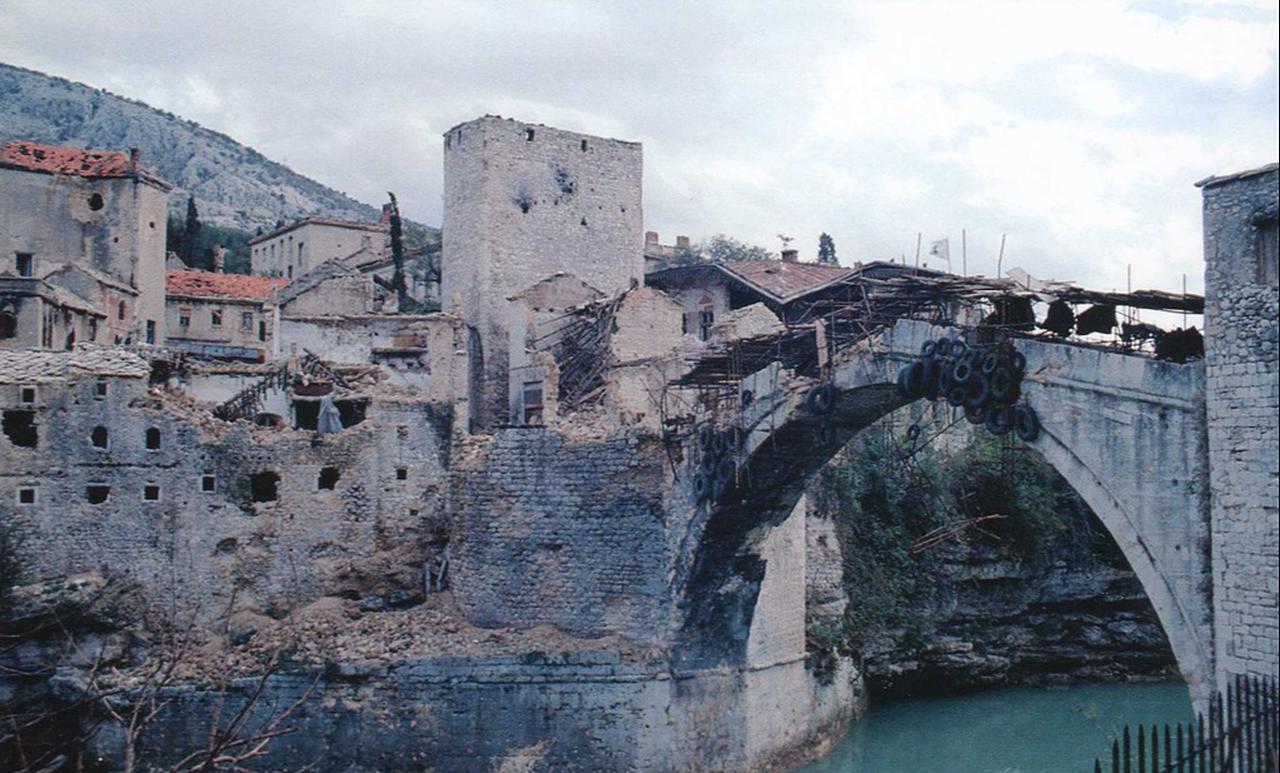
Mostar in southern Bosnia and Herzegovina continues to draw travelers in every season as its Ottoman-era bridge and the emerald Neretva River come together to offer history and scenery in one place, with cafes and restaurants on both banks adding to the city’s lived-in charm.
The Neretva River, known for its clear, emerald-green water, runs through the heart of Mostar and sets the tone for a visit that blends natural beauty with layered history.

Often called the city’s “Osmanli gerdanligi” (“Ottoman necklace”), the Mostar Bridge has for five centuries linked not only the two riverbanks but also Bosniak and Croat communities (Bosniak refers to the country’s Muslim Slavic population; Croat refers to its Catholic community).
The bridge was built in 1566 by Mimar Hayreddin, a student of the leading Ottoman architect Mimar Sinan. Ottoman traveler Evliya Celebi described it as “benzersiz” (unique), a remark that still echoes in how visitors talk about the site today.
The single-span, pointed-arch bridge of cut stone rises about 21 meters above the river at its highest point, precisely where the channel is deepest and narrowest, and it is widely known as a place where divers prepare to jump into the Neretva as onlookers gather.

Mostar is reachable from the capital Sarajevo by bus and by a scenic train that departs in the morning. The rail line takes in viaducts and dozens of tunnels (a viaduct is a long bridge-like structure that carries a railway across a valley), with green hills and river views along the way.
In 2018, the Sarajevo–Mostar route was selected as one of 18 “dream routes” worldwide. The journey takes around two hours and ends by rolling along the Neretva into Mostar.

The city’s “soul,” as the bridge is often called, fell victim to the 1992–95 war. After heavy artillery fire by the Croatian Defence Council (HVO, a wartime formation) began on Nov. 8, 1993, the bridge collapsed the next day at 10:16 a.m., an event recorded on camera that drew wide international reaction.
With support from several countries and international organizations, including Türkiye, the bridge was reconstructed true to its original form and reopened in 2004.
The bridge and the Old City of Mostar were inscribed on the UNESCO World Heritage List in 2005 (UNESCO’s list recognizes places of outstanding cultural or natural value).